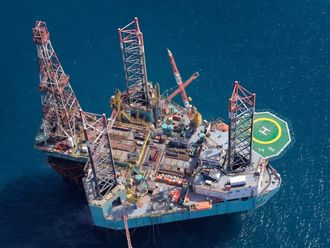
Riyadh: Saudi Aramco has forecast that the kingdom's daily energy demand will reach an equivalent of 8.3 million barrels by 2028, more than double the 3.4 million barrels equivalent in 2009.
Currently, of the 8.3 million barrels daily in oil production, more than three million barrels are consumed by the domestic market mainly to fuel national industries.
In the meantime, the National Industrial Clusters Development Programme (NICDP) is promoting solar energy, value chain products to support solar power plants, which are envisioned to be established across the kingdom as a component of the country's resolve to harness renewable energy to meet increasing electricity demand.
Saudi Arabia's industrial clusters programme in solar energy products is introducing the polysilicon and photovoltaic technologies, said Azzam Shalabi, president of the National Industrial Clusters Development Programme.
Integration
"The programme is currently developing three projects in the silicon route which would bring in 12 KTA of solar grade polysilicon and semiconductor grade polysilicon," Shalabi said during his presentation on the progress of the industrial clusters plan of the kingdom.
He said in a press release the polysilicon projects will integrate other projects, such as the production of ingot, wafer and cells, ensuring the production of modules upon the development of the local market.
A number of local firms are now conducting feasibility studies on the production of solar photovoltaic thin films for local and export markets.
The solar energy project encourages also the conversion of the kingdom's high quality silica sand for the production of solar grade glass for exports.
Curbing dependence
Saudi Arabia has now resolved to harness solar power and renewable energy to meet its increasing electricity demand and, thereby, in the process, curb its dependence on crude oil.
According to the Electricity and Co-Generation Regulatory Authority (ACWA), an initial investment of more than $100 billion (Dh367.3 billion) will be needed to expand electricity power generating capacity and transmission grid, build renewable energy plants, and set up nuclear power installations.
A third of the $100 billion is expected to fund the building of solar power plants and other renewable energy resources.
The Saudi Electricity Company's current generation capacity is about 45,000 megawatts, which is projected to increase to 75,000 megawatts by 2018 and to more than 120,000 megawatts by 2030.
Swinging into profit
The Saudi Arabian Mining Co (Maa'den) said on Tuesday it had moved to a net profit in the third quarter of the year compared to the same period in 2010 due to higher world gold prices and an increase in sales.
Net profits climbed to 27.4 million riyals (Dh26.8 million) compared to a net loss of 200,000 riyals in the corresponding three-month period in 2010, Ma'aden said in a statement on the Saudi stock exchange website.
The state-run firm, which was set up in 1997, has been expanding its operations to also include phosphate and bauxite mining.
Gold prices have been climbing sharply over the past year, and closed up $35 per ounce, or at $1,669.60 an ounce in New York on Monday.
The average gold price was $1,703 an ounce in the third quarter compared to $1,227 an ounce in the year-earlier period. Gold traded at $1,671 an ounce at 9.34am in Riyadh.
Ma'aden, whose main focus is gold mining, is expanding by adding three new business lines.
These include aluminum and phosphate to tap into the rising demand for chemicals used in agriculture and the lightweight metals used to make beverage cans and aircraft.
A joint venture between Ma'aden and New York-based Alcoa Inc started construction at an alumina refinery in Ras Al Khair, Alcoa said on August 10.












